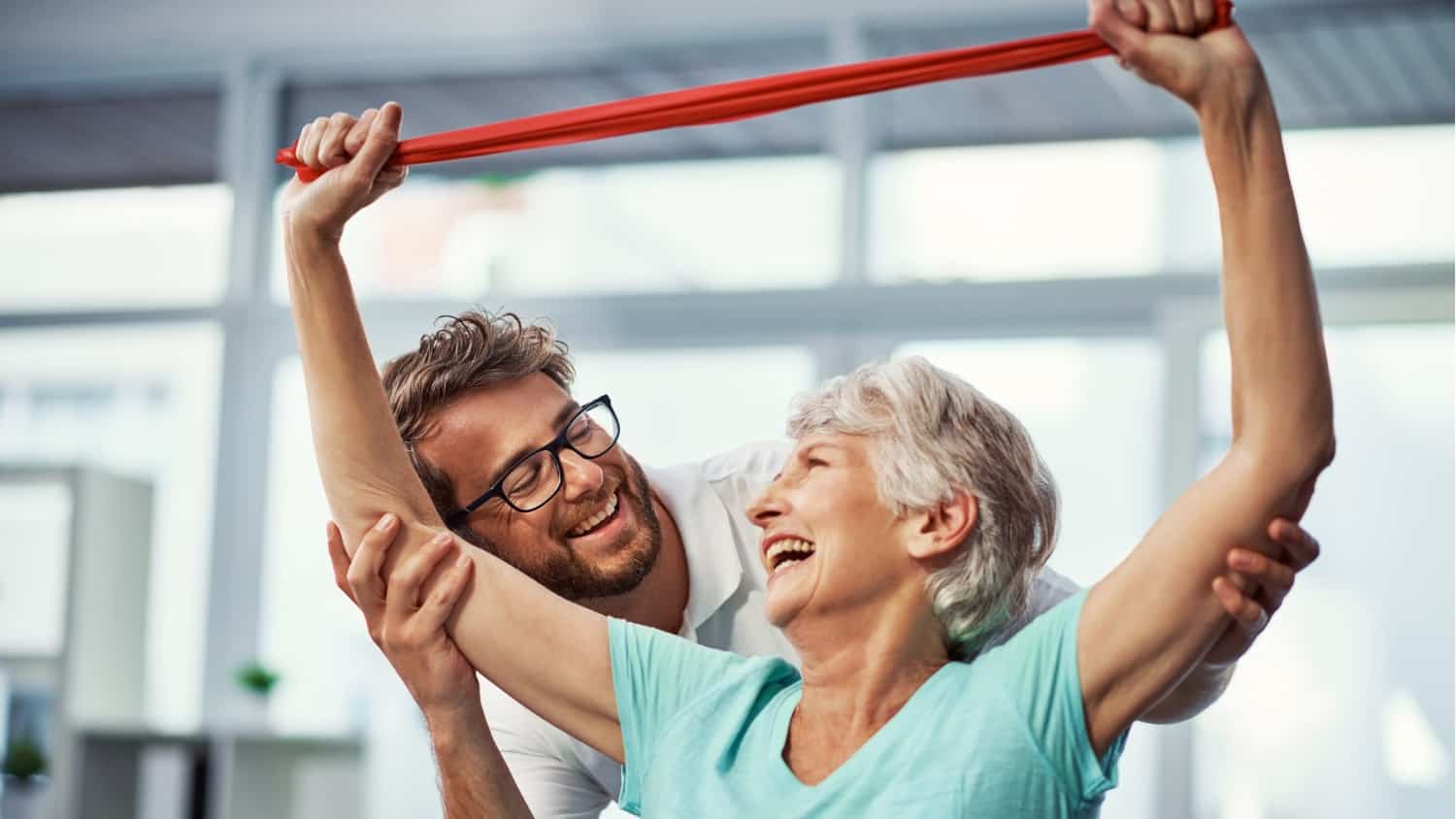
Resistance Training for Older Women? Yes, We Can Do It!
Everybody knows that regular physical activity and exercise play an important role in maintaining a healthy body at any age and more so for older adults.
You may have heard people talk about resistance training or weight bearing exercise. Or maybe your doctor has asked you to incorporate this form of training into your life. But why should it be an important part of your fitness regime as you age?
We all know there are many fitness trends that come and go. Resistance training, however, is here to stay. Why? For starters, the movements are varied and easy to do, and the benefits are amazing, especially for those over 50.
So, let’s break this down and explore the possibilities of how you can easily integrate resistance training into your life.
What Is Resistance (Weight Bearing) Exercise?
Resistance training is a form of physical activity that exercises muscles or groups of muscles to contract against an external weight/force. This helps strengthen the muscles which, in turn, protects the skeletal system.
The overall results are increased power, strength and endurance over time.
Why Is It Important to Add Resistance Training into Your Life?
Muscle wasting and bone density are prevalent with age. In women over 50, bone loss increases to 1–2% a year and accelerates up to 2–4% a year at the onset of menopause.
Focusing on prevention of these conditions as well as addressing risk factors for frailty and balance is the key to living an active life well into your later years. This is where resistance training becomes important for improving muscle and bone strength.
For physically active older adults the benefits of resistance training are profound.
Within my coaching of women over 50, I have witnessed changes for the better in many participants who tell me they have had an improvement in their bone density tests just by doing our resistance training classes.
Types of Exercise
Resistance Training
Performed with either a resistance band, body weight, hand weights or barbell, resistance training is a progressive practice that builds up over a period of time.
Progressive can mean heavier weights, changing the tempo/speed or the way you perform the exercise.
Weight Bearing
In the weight bearing category fall walking, jogging and stair climbing. For higher impact, you can also do skipping, dancing, jumping or tennis. These do not need to be at the highest level; they can also be modified to your individual needs.
Even a small hop from one foot to the other can make an impact.
Balance and Cognitive Function
There are also exercises that can improve strength and brain function as well as help reduce falls and cognitive decline.
Standing on one leg, lifting your knees to your chest while walking, stepping up and over a small step/obstacle, following foot or arm patterns in a directional (left, right, up, down) form.
How Much Resistance Training Should You Be Doing?
To begin, it’s good to do resistance training at least two non-consecutive days each week and you can work up to four days a week with a break in between each session.
Start slowly and build up from there. The good news is, you do not need any fancy equipment to get started!
You can begin a resistance training program very simply at home, utilising the tips above to help you build strength and protect your bones.
If you would like a free 7-day beginner workout guide with bonus instructional videos on resistance training exercises you can do at home without equipment feel free to download it here: 7-Day Beginner Workout Guide.
How will you incorporate resistance training into your life? If you’re already into resistance training, what are your favourite ways of boosting your muscle mass and bone density? Please share how you got started and what’s keeping you going so the whole community can benefit!
Tags Fitness Over 60






